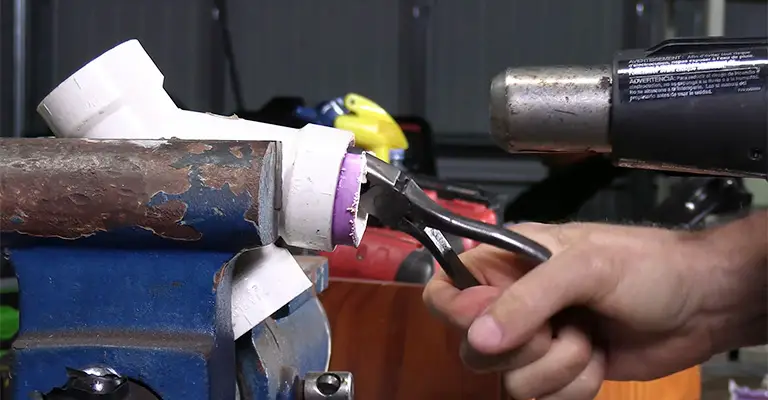When it comes to working with PVC pipes, one common challenge that may arise is having to remove a pipe that has been securely glued in place.
Whether you need to replace a damaged section of pipe or modify your plumbing system, removing a glued PVC pipe can seem daunting.
However, with the right tools, techniques, and a bit of patience, it is possible to safely and successfully remove a PVC pipe that is glued in.
This guide will walk you through the step-by-step process of removing a glued PVC pipe, providing you with the knowledge and confidence to tackle this task effectively.
Different Ways To Unglue PVC Pipe
PVC pipe is a great choice when you need a strong joint, and it can easily be glued to other things. Once a PVC joint is put together with glue, it is impossible to dissolve the solvent. It’s there, and it won’t go anywhere.
So, what if you make a mistake? It doesn’t seem like your PVC cement will come loose anytime soon since it has already dried. PVC pipes that have adhesives already applied cannot be unglued technically.
The good news is that you don’t have to panic. If PVC pipes have already been glued, they can be repaired. We will provide the most reliable one for you.
In addition, it’s important to remember that PVC pipes can’t be unglued or unstuck if the glued area has dried. Therefore, we’ll cover four options for separating PVC pipes.
Understanding How PVC Pipe Glue Works
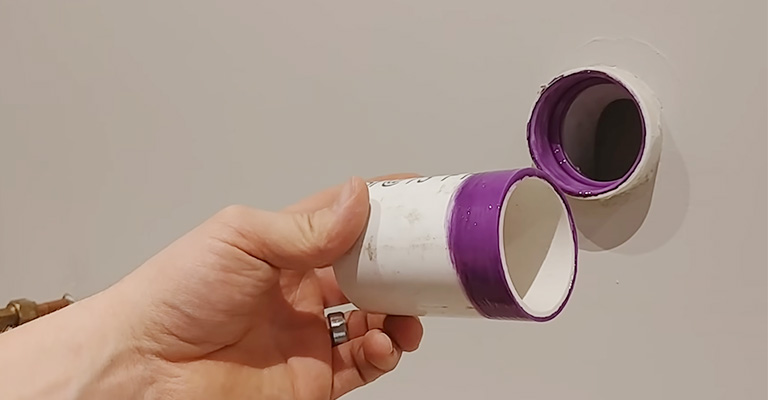
No, PVC glue isn’t glue. While glue is a convenient term, it doesn’t fully describe the power of a substance that works at the molecular level of PVC.
Various types of glue can sit on the surface of materials and harden, such as white glue, wood glue, and hot melt glue.
One material sticks to the other material because of the hardened glue. As far as PVC glue is concerned, it works entirely differently.
Solvents like PVC glue melt the two pipes and adhere them together. Once PVC glue is applied to the PVC pipe, it softens and dissolves the top layer, causing the pipe to become flexible.
The softened plastic of the first and second pieces of PVC bond when pushed together. Thus, PVC is formed in a continuous section. Joints are usually stronger than pipes themselves in most cases.
Even if you just connected the pipes now, you may be able to catch them in time. There are also times when PVC pipes are poorly joined, which can work to your advantage.
A void in the bond makes them good candidates for separation. There may have been a hurry involved in the plumber or the do-it-yourselfer applying a sole layer of PVC glue to the joint.
Tools Needed
The tools you need to fix it are going to depend on the solution you find. The following is a brief overview of what you’ll need.
- PVC cement
- A hacksaw
- Purple primer
- A hairdryer/candle flame
- A length of pipe similar to your PVC pipe
- New fittings and couplings
1. Cut And Replace The Piping
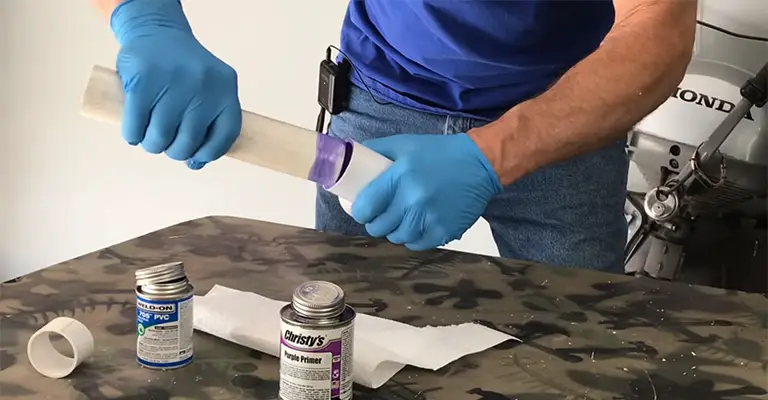
It is necessary to cut and replace the piping if you wish to use the plumbing technique that technicians prefer.
It is the only option that provides full assurance that the pipes will be strong enough for pressurized systems.
Step-by-step instructions:
1. Figure out what you did wrong and how to fix it before cutting into anything. Did you choose the wrong fitting?
Is the pipe too long or too short? Is there a way that you want to fix this after you unglue the pipe? Keep a note in mind. Consider cutting the fitting instead of the pipe if you can fix it with it.
2. Make sure you measure the PVC piping that needs to be replaced or unglued if you need to cut it out. Whenever you are cutting a pipe in a plumbing system, you need to know how long it can be cut when it is part of a system with multiple pipes.
3. If you need to unglue the pipe (or fitting) from your system, use a hacksaw to cut that portion off. Check the diameter of the pipe if you have not already done so. By doing this, you can buy hardware with confidence.
4. Purchasing new pipes, fittings, and couplings is necessary for your project. Do not forget to pick up primer and glue if you run out.
5. Ensure the piping and couplings are primed in purple. For the best results, let the primer dry for a few minutes.
6. Once the area has been primed, apply a clear PVC cement glue coat. The purple color can help you ensure a good seal when gluing the area.
7. You must replace the old PVC pipe with a new one, fitting, or coupling. Make sure the glue dries completely before using.
2. Use Heat To Soften The PVC Joints
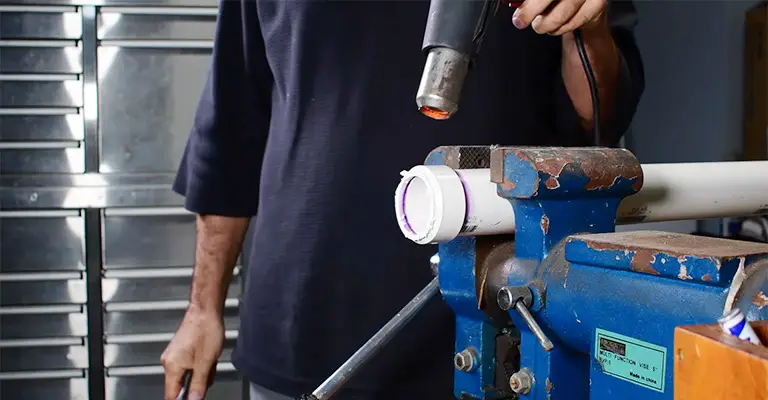
How did you glue the two joints together? A warm environment can soften PVC joints. The pipes will be able to be loosened enough with enough heat that you can pull them apart with the help of a clamp.
However, you cannot reuse those joints when working with a pressurized system. Whether you’re making a simple hamster tube or a cold-water pipe, it can still be an option to consider. It’s as simple as this:
1. Heat up the area where the joints were glued with a hair dryer or a candle. Keeping the candle at a slight distance is recommended. It is important not to burn the pipes.
2. Pull apart the PVC pipes after you have applied heat to them. This can be accomplished by twisting and loosening them.
3. Alternatively, if the heat doesn’t work, you can try the third option. Unless something goes wrong, you should be fine.
Do not use this technique if you want to use PVC pipe for your project to be sturdy. The overall structure of the pipe will be weakened, even if it manages to “unglue” your joints. Cracking and brittleness can result from this reaction.
3. Use More Glue
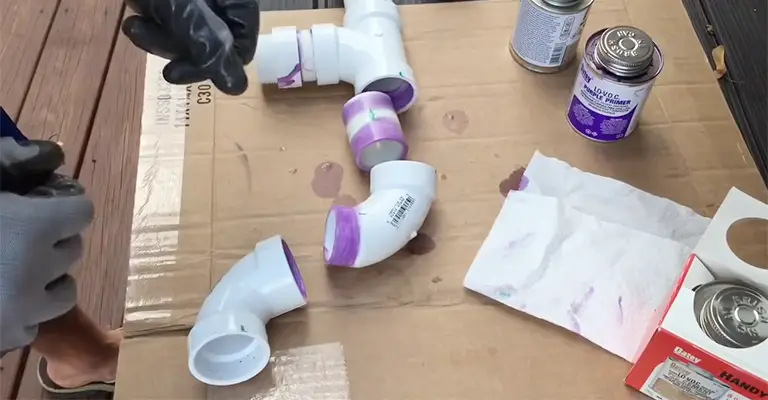
Surprising, isn’t it? While using more glue will soften your pipes, it might also weaken them. This weakens the PVC’s weld bond, making it more easily separated.
This is how you do it:
1. Over the glued area, apply primer and allow it to dry. Place purple over the area and wait a few minutes.
2. After you have applied the primer, apply a moderately thin layer of glue. Incorporate it into both couplings and joints.
3. Using a twisting motion can loosen those strong bonds between the pipe and fittings. Due to the glue’s re-melting action, it works to reduce “impossible” glue. As soon as the pipe pops out of the fitting, keep twisting and pulling it.
4. Try To Twist The Pipe Off
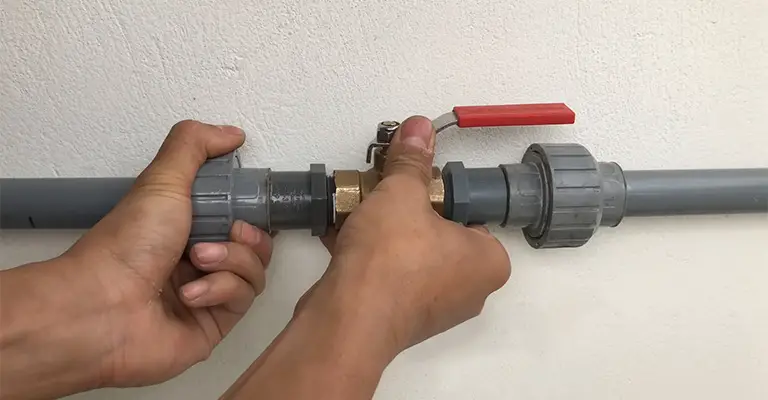
When the chemical solvent didn’t dry, you didn’t add glue, don’t add primer, or you can’t see the hardened glue from the project, try twisting the glued pipe off with your hands. Whenever you feel a wiggle, continue twisting until the pipe comes loose.
PVC pipe glue builds a strong bond that won’t leak, so it’s important to keep this in mind. By using the PVC primer, the glue melts into the pipe. So it’s a solvent weld. The moment it reaches that point, it’s stuck.
Additional Tips
Putting the right PVC piping mistakes is not always straightforward. To help you with your job, let’s add some more tips.
A Better Way To Pull
What is best to remove two fittings or couplings when your fingers hurt? It’s pretty simple, really. Using pliers to pull apart the pipe is an option if you have trouble getting a grip on it manually.
Please be careful when using those pliers if you use this tip. Take care. You may notice cracks or complete breaks if you’re not watching your pipes.
Glue Alternatives
The PVC pipes do not have to permanently fuse together if you don’t want them to. You can also use super glue or a hot glue gun to join the pipe if you are working on a fairly light project.
It’s best to always use PVC glue for high-grade projects, but there are various other methods of making your pipes stick together.
You should use cement glue designed for PVC pipes with a primer designed for pressurized systems. A burst pipe could lead to disaster!
Clean Up Glue
You dropped some PVC cement glue on your floor or cabinet, didn’t you? Keep calm, and don’t panic. It’s not the end of the world if you spill something.
It’s easy to clean up. The spill should be treated with acetone (like your sister’s nail polish remover!).
By using acetone, you will loosen the glue. Remove any loosened glue with a clean rag. In most cases, you should not need to use rough sandpaper or a small scraper to remove your glue.
Choosing Glue
For plumbing or any other major project, ensure you get the appropriate glue when using PVC piping. A PVC cement glue package will mention PVC, or it might even be called PVC cement glue instead of regular cement glue.
Final Words
Following the directions on the glue package will yield the best results. The application should be evenly distributed, and the drying time should be followed before turning on the water. Wear gloves when handling adhesive.
PVC fittings or couplings joined with primer, and solvent cement cannot be unglued because it creates a solvent bond.
As a result of the primer and solvent cement combining on the PVC, they melt it together essentially. The combination of these individual pieces has created a single piece.
With only one piece in your hands, there is no way to unglue it. However, if you have a broken or damaged pipe that needs to be repaired, you might be able to work around this problem.

